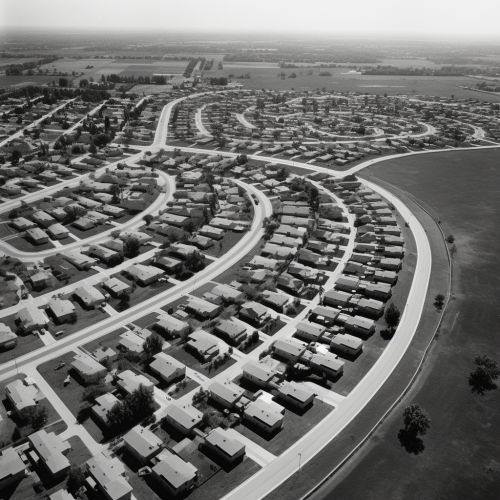Levittown
History
Levittown, named after its founders, the Levitt family, is a suburban housing development that was constructed between 1947 and 1951 in Nassau County, Long Island, New York. It is considered one of the first mass-produced suburbs in the United States and served as the model for postwar suburbs throughout the country.


The Levitt family, specifically Abraham Levitt and his sons William and Alfred, were the driving force behind the creation of Levittown. They had previously been involved in the construction industry, but the end of World War II and the subsequent housing shortage prompted them to focus on residential development.
The Levitts purchased a large tract of potato farmland in Nassau County and began to construct single-family homes. The houses were built using assembly line methods, which allowed for rapid construction and affordability. Each house was identical, with two bedrooms, a living room, kitchen, and bathroom, and came equipped with modern appliances.
The development was racially segregated, with the original rental agreement stating that homes could not "be used or occupied by any person other than members of the Caucasian race." This policy was later challenged and overturned in court.
Design and Construction
The design of Levittown was innovative for its time. The Levitts utilized assembly line methods, similar to those used in the automobile industry, to construct the homes. This allowed for the rapid construction of houses, with as many as 30 homes being completed in a single day.
Each house was built on a concrete slab with radiant floor heating pipes embedded in the concrete. The houses were small, with a living area of just under 750 square feet, and were designed to be expandable. Homeowners could add a second story or additional rooms as their families grew and their financial situations improved.
The homes were also equipped with modern appliances, including a refrigerator, washing machine, and television, which were included in the purchase price. This was a departure from the norm at the time, as appliances were typically sold separately from the home.
The layout of Levittown was also unique. The development was divided into neighborhoods, each with its own school, shopping center, and park. The streets were curved, rather than following a grid pattern, to discourage through traffic and create a sense of community.
Impact and Legacy
Levittown had a significant impact on suburban development in the United States. It served as a model for other mass-produced suburbs and helped to establish the pattern of postwar suburban growth.
The development also had a significant impact on the housing industry. The use of assembly line methods in construction, the inclusion of appliances in the purchase price of the home, and the concept of a planned community with amenities were all innovations that were widely adopted by other builders.
However, Levittown also faced criticism for its racial segregation policies and its contribution to urban sprawl. The development's legacy is thus a complex one, reflecting both the positive and negative aspects of postwar suburbanization.
